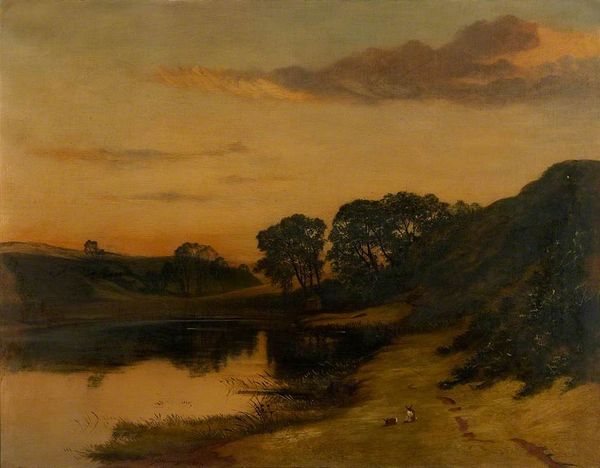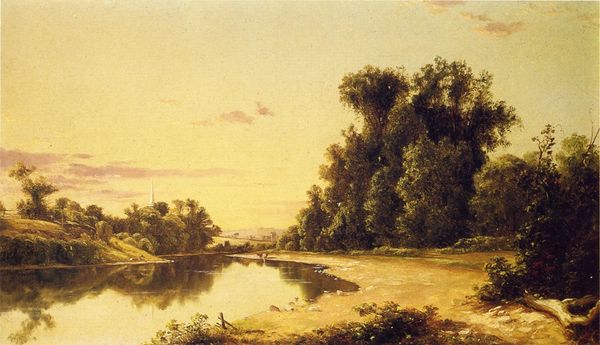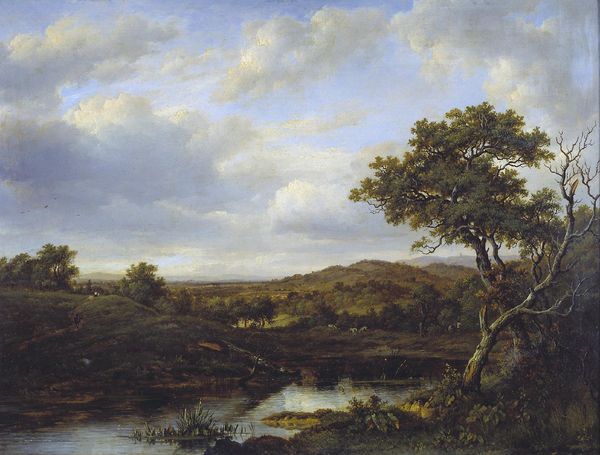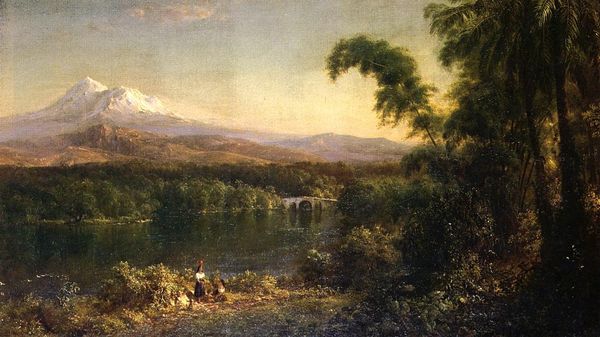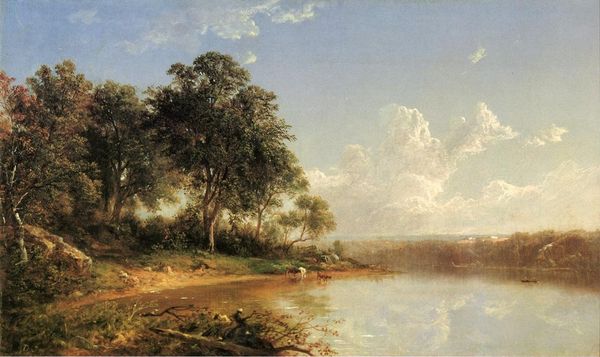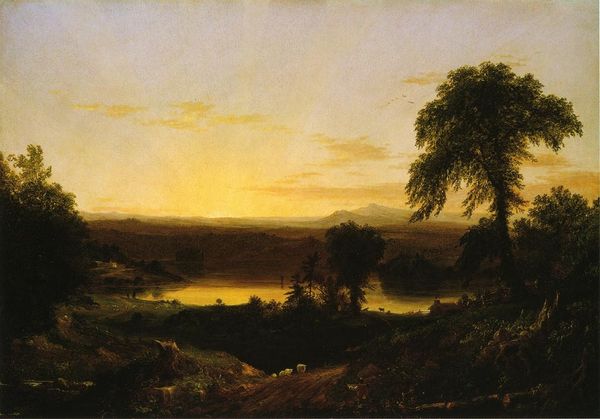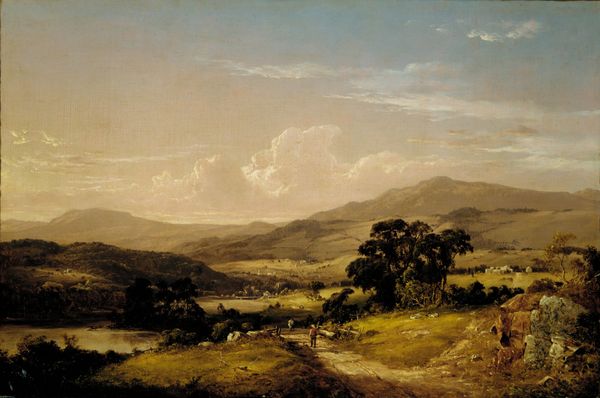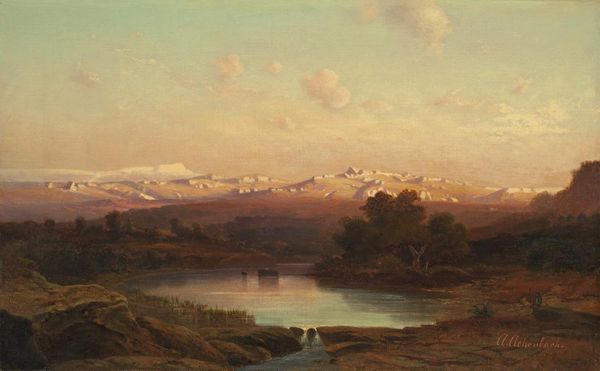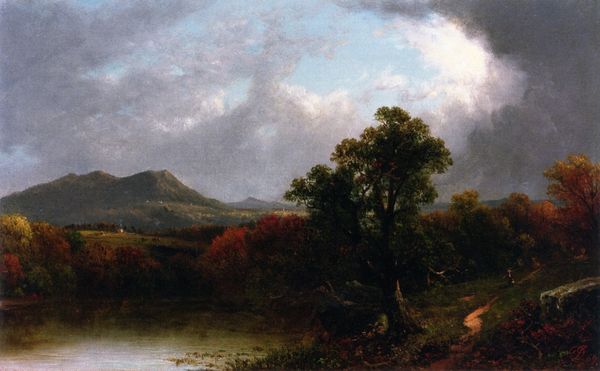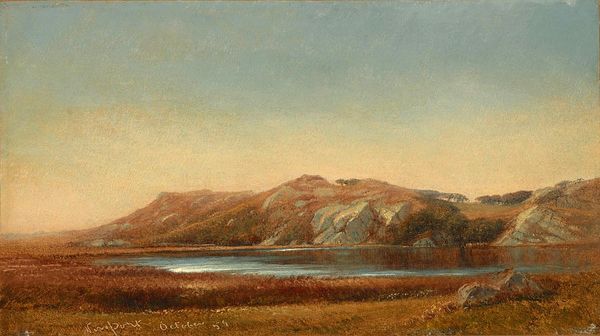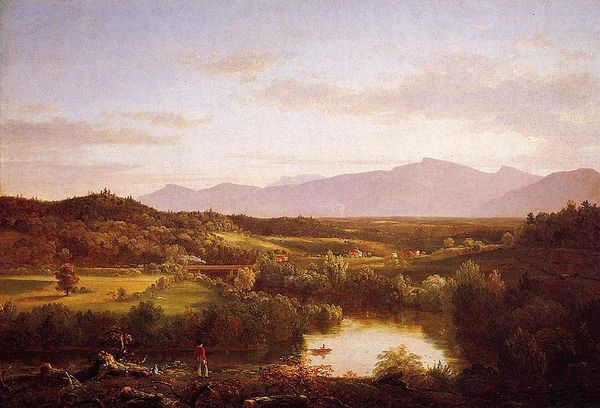
painting, plein-air, oil-paint
#
tree
#
sky
#
ship
#
painting
#
plein-air
#
oil-paint
#
landscape
#
nature
#
hudson-river-school
#
realism
#
sea
Dimensions: 15.88 x 24.13 cm
Copyright: Public domain
Curator: What a tranquil scene. Albert Bierstadt’s oil on paper painting "Study for Gosnold at Cuttyhunk," made in 1858, offers us a glimpse into an imagined past. The location itself, Cuttyhunk, is significant. Editor: Imagined indeed! My first thought was "golden hour serenity," that hazy light just smothers the whole landscape. It’s lovely, of course, but I can't shake the feeling it's a bit... romanticized? Curator: Certainly! Bierstadt, though associated with the Hudson River School and its emphasis on realism, frequently took artistic liberties. He presents us not with a purely objective depiction of the landscape, but rather, a constructed vision—informed by colonial narratives and perhaps also nostalgia. Look at the textures – the layering of the oil paint, simulating a very soft-hued scene. Editor: And a very marketable one, I’d wager! Though I have to admit, even knowing it’s potentially...spun, the craftsmanship draws me in. The reflections in the water, the way the light hits the sails of the ship in the distance – lovely technical skill. Plus, consider the material value, these were quickly done oil sketches he used later. Curator: The fact that this piece is a ‘study’ is particularly insightful. It reveals the artist's working methods, breaking the art-making process down. It allows one to question the modes of production within nineteenth century landscape paintings. Editor: Good point. It also makes me wonder, did he sell it as a finished piece, or just file it away for later? Maybe that affects how we should view the "labor" question here. The ducks floating, even seem slightly absurd, like a peaceful invasion! It disrupts the picturesque narrative a bit, no? Curator: That absurdity, as you say, opens a door to thinking about this artwork not simply as a beautiful scene, but as a space filled with production: the land, water, the labour, painting itself, all captured within the frame of commodity exchange and visual representation. Editor: Makes a fella wonder if the real story lies in what isn't immediately apparent, beyond the surface of golden-hour bliss. Thanks for putting it into a new perspective. Curator: And thank you. I shall try to appreciate the ducks with renewed fervor.
Comments
No comments
Be the first to comment and join the conversation on the ultimate creative platform.
